Evaluation of a Scripted Curriculum Literacy Unit
Selected Unit: HMH Into Reading
(A) Evaluation Questions: Support for Diverse Learners
Strengths
- Texts That Can Be Considered Windows and Mirrors
The unit includes a balanced selection of texts. “Tap the Magic Tree” serves as a window, inviting children to explore themes of nature, seasons, and growth while reflecting on their experiences with play and imagination. Meanwhile, “The Book with No Pictures” acts as a mirror by showcasing the joy of storytelling, encouraging children to see the fun in reading and how stories can transcend cultural boundaries (Novak, 2014). This balance promotes both a sense of belonging and cultural awareness: Evaluation of a Scripted Curriculum Literacy Unit.
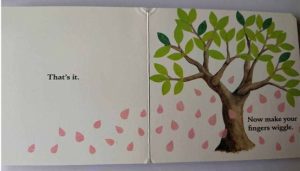
- Opportunities to Make Connections to the Background Knowledge and Interests of the Children in the Class
The unit provides activities to activate students’ background knowledge before reading. For example, discussions about seasonal celebrations helps connect children’s personal experiences to the themes in “Tap the Magic Tree,” fostering engagement and deeper understanding, as advocated by Souto-Manning and Martell (2016).
Weaknesses
- Opportunities to Differentiate Lessons to Adequately Challenge and Support All the Children in the Class
Although the unit presents some differentiated activities, some lessons lack sufficient variation in their approach. This may not adequately challenge advanced learners or provide enough support for struggling students. Enhancing differentiation could improve engagement and outcomes for diverse learners.
- Opportunities Provided by the Unit to Incorporate Learning Preferences
The unit primarily utilizes direct instruction and text-based activities, which may not fully engage students with varying learning preferences. Incorporating more kinesthetic and tactile activities, such as role plays based on the texts or hands-on crafts related to “Tap the Magic Tree,” would better serve a broader range of learners.
Characteristics of the Children
Second-grade learners in St. Simon Stock School are from different cultural, linguistic, and economic statuses. Many students are English Language Learners (ELLs) who require visual aids and culturally appropriate texts. In this regard, using the book “Tap the Magic Tree” in conjunction with explanations of cultural practices helps the students make connections between their lessons and their own lives, thus encouraging them.
Also, some learners have special needs that make them eligible for special education services, which, in turn, demands the teacher to provide different teaching methods to address the learning needs of the learners. The curriculum must be accommodating, allowing for group lectures and storytelling so that students can relate to each other.
(B) Lesson Adaptation Proposal
Selected Lesson: Interactive Read-Aloud of “Tap the Magic Tree”
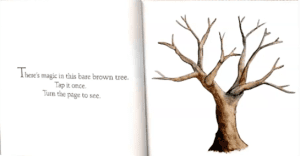
Recommendation 1: Incorporate Close Reading with Text-Based Questions
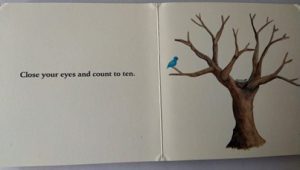
- Explanation: Applying close reading strategies with “Tap the Magic Tree” would help students to understand the text better and stimulate their thinking abilities. Textual questions can also enable the students to think more critically about the content and also offer a discussion topic about the interactive features of the book.
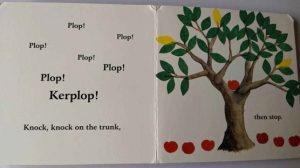
- Implementation: After the read-aloud, I would ask the children questions like, “What did we do to help the tree grow?” and “How do you suppose the tree felt when we tapped it?” This would help the students to relate the live features of the application to the text. This method also helps ELLs because it offers a clear way of integrating with the language.
Recommendation 2: Utilize Collaborative Learning Strategies
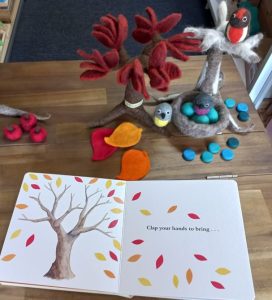
- Explanation: Collaborative learning helps students become more active in the classroom, especially for the culturally diverse learners. In this way, students are able to get different viewpoints and work in a group, fostering community spirit.
- Implementation: After the read-aloud, it would be useful to divide students into groups and have them share with the class the parts of the story they enjoyed and how these are connected to their culture or life. Each group could then share their thoughts with the class so that everybody can learn from each other’s culture. Notably, this aligns with the principles of inclusive teaching.
References
Novak, B. J. (2014). The book with no pictures. Penguin.
Souto-Manning, M., & Martell, J. (2016). Reading, writing, and talk: Inclusive teaching strategies for diverse learners, K-2. Teachers College Press.
ORDER A PLAGIARISM-FREE PAPER HERE
We’ll write everything from scratch
Question 
(B) Pick one lesson in the unit. The lesson should be based on a text in the unit. Include images of the whole lesson in the assignment.
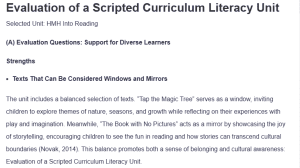
Evaluation of a Scripted Curriculum Literacy Unit
Taking into account your responses to the bullet points above, make two detailed recommendations of how you would adapt the lesson to better support/engage the children in your class. When doing this, (1) identify each adaptation, (2) explain why each adaptation is needed to support/engage the children in your particular class, and (3) provide a specific, well-developed example of how you would carry out each adaptation if you were teaching the lesson to the children in your class.